Review for Alien Anthology [6 Disc Set]
Introduction
This is one of those daunting reviews. It’s one of those boxsets that I take one look at, and then put it on the back-burner, hoping to one day find the time to give it a decent review. That day is here (or rather the number of boxsets is beginning to outnumber the single discs in my to-watch pile). It’s also made a little more difficult by my tendency to no longer marathon movies and TV shows. Too much of any one thing, no matter how good eventually becomes tedious for me, so I tend to space things out a lot more than when I was younger. I can’t watch four Alien movies in a row anymore. Actually, in this case it’s eight Alien movies, as it does have two versions for each of the films. It also has the “Revolutionary MU-TH-UR Mode” with 2 bonus discs. I started watching this set for review in August 2015. Let’s see how long it takes me to get to the end of the collection (Answer at the bottom of the review).
Just like the titular xenomorph, Alien is the franchise that just refuses to die. I actually got this collection to upgrade the first two films to Blu-ray, as it was cheaper than buying the first two Blu-rays individually. I got the final two movies as a bonus, or a penance depending on your point of view. I don’t have fond memories of the third film, but I quite liked Jean-Pierre Jeunet’s Alien Resurrection (although not enough to buy it on DVD). But even after the Gallic take on the Alien franchise appeared to put the final nail into the coffin, there came two Alien vs. Predator movies inspired by the crossover comics, and a couple of years ago, Ridley Scott revisited the concept with the ‘prequel’ Prometheus. And every few weeks I see rumours of another Alien movie in the works, a partial reboot in the vein of Superman Returns, which will follow on from Aliens, ignoring all the rest, and once more starring Sigourney Weaver and Michael Biehn. That’s not bad for a space horror movie from 1979.
Incidentally, there’s so much to the two bonus discs that I’ll link to a separate article for them here.
Introduction: Alien
Alien: Theatrical Edition 1979 – 116:37
The spaceship Nostromo is returning home to Earth, when its computer intercepts a message from a desolate barren world. Following standard company procedure regarding distress calls, it alters the ship’s course towards the planet and sets about reviving the crew from suspended animation. When the Nostromo’s crew land on the planet, they find a mammoth alien vessel crashed on the surface. The captain, Dallas and two other crewmembers, Lambert and Kane go to explore the source of the transmission while the rest of the crew remains to make repairs to the Nostromo. In the alien ship, they find a massive alien skeleton with a shattered chest. Exploring further, they come across a carpet of leathery eggs. When Kane examines one closely, it opens up and a creature attaches itself to his face, breaking through his helmet. They rush back to the ship, desperate to get Kane some help. After some inconclusive medical treatment, the creature falls off by itself and a shaky Kane seems to make a full recovery. Then the crew sits down for a hearty meal…
Alien: Director’s Cut 2003 – 115:49
For the 2003 revision, Ridley Scott revisited the film and restored some more character beats, a discussion about the alien signal, a confrontation between Lambert and Ripley, extended a couple of death scenes, and added the infamous cocoon scene. Through judicious editing, and tightening of pace, the film actually runs shorter than the theatrical cut, despite the additional scenes.
Picture: Alien
Alien gets a 2.35:1 widescreen transfer, and it’s certainly scrubbed up well for a film that’s 35 years old. Print damage and age certainly isn’t a problem, the print is stable and clean, offering consistent and strong colours. The image is clear and sharp, and the high definition format is well suited to bring out all the detail and depth that you’ll have come to expect. Given the film’s tone and style, there’s no problem with dark detail or crushed blacks. It’s a vibrant, immersive image with depth and life to it. Also, after all this time, the model work and effects still blow modern CGI away. Comparing Alien to the videogame feel of Prometheus, it’s easy to see which film is the better looking.
Sound: Alien
You have the choice between DTS-HD MA 5.1 Surround English, DD 4.1 Surround reflecting the original cinema experience, DD 2.0 English Surround, DD 5.1 Portuguese and Spanish, as well as DTS 5.1 Surround French and German, along with plenty of subtitle tracks. I love the surround audio here, truly immersive, chilling, and enhancing the horror as the film progresses. You really do feel as if you’re in the middle of a working spaceship, and get increasingly on edge as the story unfolds. Much of it is down to the sound design, and much of it down to Jerry Goldsmith’s music. The dialogue is clear when it’s supposed to be, although it seemed out of sync during the breakfast scene.
Extras: Alien
While all the documentary footage and more have been consigned to the final two discs of the collection, the film discs do get extras too. If you choose the Theatrical Cut, you can access the 2003 audio commentary with director Ridley Scott, the cast and crew. It’s one of those patchwork commentaries put together from various sources, but is still good to listen to.
The 1999 audio commentary from Ridley Scott was familiar to me from the original DVD release, and is still a decent listen.
You have two isolated scores, the Final Theatrical Isolated Score, and the Composer’s Original Isolated Score, both in DD 5.1. New for the Blu-ray is a track listing, which lets you listen to the music directly, missing out all the silent bits in the film.
Finally there is a Deleted Scenes Index, offering a Play All which lets you watch them in 6:39. All of them have been restored to the Director’s Cut.
If you choose the director’s cut version, you’ll get a 0:57 introduction to the film from Ridley Scott, presented in 480i. From the extras you can access a Deleted Scenes Marker, which will flag up which scenes have been restored while you watch the film. The only extra accessible from this menu is the 2003 commentary; all others urge you to switch to the Theatrical Cut Menu.
Conclusion: Alien
The first is still the best for me, although James Cameron’s sequel does come pretty close with its shift in genre. The first alien is such an iconic piece of cinema that it’s no wonder that the filmmakers keep returning to that well of inspiration. After all this time, the well doesn’t seem to run dry, although the quality of the films may be up for question. Ridley Scott’s return to the Alien universe took it in a thoughtful, metaphysical direction, which seems wholly removed from the simple, but effective story of the first film. It’s just a slasher horror in space, with H.R. Giger’s design for the slasher making the whole thing work. There’s no deep thought about it, no hidden meaning, except maybe the psychological aspects of the design, the sexual undercurrent.
What makes Alien so special is the mundanity of its characters. These are just average, hard working Joes (and Janes) in space. There’s camaraderie, there’s a bit of rivalry, there’s the upstairs downstairs aspect, with the engineers complaining about the officers, and there are personality conflicts. It’s all, normal blue collar stuff, and Alien focuses on that for the first hour, introducing and exploring the characters and their interactions. The alien doesn’t even make an appearance till the hour mark, at which point you’re so invested in the characters that you’re in for the ride, no matter how the alien actually looks. Taken out of context, the chestburster scene is pretty comical, and rightly parodied in Space Balls, but following an hour of build up, it is truly scary and shocking. Fortunately the fully grown alien is a thing of nightmares, but even still, Alien follows the Jaws precept of keeping the shark off the screen as much as possible.
This was my first time watching the director’s cut, and I have to say that I prefer the theatrical version. I do appreciate the added character beats in the film, and certainly the confrontation between Lambert and Ripley really does make sense given what occurred prior to that moment. But despite my statement that the grown alien does look good, I do feel we see a little too much of it during Brett’s demise, which sort of detracts from the shock later in the film. But the worst scene is the cocoon scene, not for any dramatic, performance, or effects reasons, but for its placement in the narrative. It just doesn’t make sense for Ripley to stop off in the middle of a self destruct sequence to take a look below decks, when her first priority would be to get the hell off the ship.
It’s an interesting alternate vision though, and I’m sure I’ll watch it again. But the Theatrical Cut is for me the superior version of the film, and still after all this time the best of the Alien franchise, as is so often the way.
10/10
Introduction: Aliens
Aliens: Theatrical Edition 1986 – 137:14
A salvage vessel encounters a shuttle drifting in deep space; its sole occupant, Warrant Officer Ellen Ripley. As Ripley recovers, she has to come to terms with the fact that 57 years have passed, and she suffers from the inevitable nightmares after her ordeal. Things aren’t helped by the company refusing to believe her outlandish tale about a rapacious xenomorph rampaging through the Nostromo. When she tries to persuade the company to go to LV-426 to investigate the crashed alien ship, she learns that there has been a colony of terraformers living there for decades, with never a mention of alien creatures. Despite her warnings, she loses her commission and is reduced to working as a loader in the docks.
Then contact is lost with the colony, and it begins to dawn that Ripley’s story may be true. She reluctantly agrees to accompany a force of Colonial Marines as a consultant to advise them on how to handle the aliens, if there are any. But the past continues to haunt her, despite the presence of the cocksure and rowdy marines. The presence of an android, Bishop on the mission is hardly reassuring after her experience with Ash, and it seems that the company representative on the mission may have the same ulterior motives that resulted in the loss of the Nostromo 57 years previously.
Aliens: Special Edition 1990 – 154:26
The 1990 Special Edition sees the restoration of scenes, including some Ripley back-story about her daughter, Newt’s family taking the space-camper-van on a day trip to the alien vessel, some extended scenes searching the facility and wandering around tunnels, and the robot sentry sequence.
Picture: Aliens
Aliens gets a 1.85:1 widescreen 1080p transfer. Apparently Aliens was in a horrendous state, much of that down to film grain, and that because of the film stock used back in 1986, what could best be described as a bad batch. For this reason, Aliens has undergone a significant face-lift before coming to Blu-ray, being processed for HD presentation. It’s the kind of thing that has me whinging on other films, the spectre of DNR, de-graining, colour correction and the like. The thing is that they applied the processing with a sympathetic eye, to make it look as good as possible, without losing the feel of film. Aliens looks fantastic, far better than I’ve ever seen it before.
The film retains a light layer of organic film grain, but in terms of detail and clarity, it’s almost a different movie. Just like the Terminator disc I reviewed last year, there’s been a slight shift in the colour timing from blue towards green, and this has had the effect of bringing out far more detail. Skin tones are natural, colours are vivid, and contrast levels are far better than you might have hoped to expect, but still not great. You can’t create detail that was never there, and one of the weak points of the original film stock was a lack of dark and shadow detail, and this Aliens Blu-ray enhances and brings it out as much as possible without ever crushing the blacks. But there are still moments where blacks tend to grey, and distance detail fades. The downside of HD is that it makes the rear-projection and the matte paintings even more obvious.
Sound: Aliens
Once again you get the choice between DTS-HD MA 5.1 Surround English, DD 4.1 Surround reflecting the original cinema experience, DD 2.0 English Surround, DD 5.1 Portuguese and Spanish, as well as DTS 5.1 Surround French and German, along with plenty of subtitle tracks. Another great surround track here, this time designed for action and non-stop adrenaline. You’re thrown right into the thick of things along with the beleaguered Marines, and the sound design keeps you on the edge of your seat and pumped until the film’s conclusion. James Horner’s score certainly suits the film well, but whenever the marines engage the aliens in battle, I always flashback to the Enterprise vs. the Reliant in Wrath of Khan. One issue that I do get with both versions of this film is that the audio seems to drift in and out of sync during playback by a smidge. It’s fine for the last hour or so, but in the first half it feels a little inconsistent, although it might be a player incompatibility thing.
Extras: Aliens
Another animated menu presents the film. If you choose the theatrical version, you will be able to access the 2003 audio commentary, another patchwork affair from Director James Cameron, selected members of the cast and the creative team behind the film. It’s a nice, informative, and well edited commentary.
You can also listen to the Final Theatrical Isolated Score, and the Composer’s Original Isolated Score, which without the distraction of dialogue and sound effects sounds even more like James Horner’s scores for Star Treks II and III. I didn’t notice a track listing for these scores as I did for the first film.
There is also a deleted scenes index which lets you watch all those bits that were restored for the Special Edition.
If you choose the Special Edition, you’ll get a deleted scenes marker option that will highlight those bits as you’re watching the film. The film will start with a 34-second 480i introduction from James Cameron, but the only extra that you’ll be able to access from this menu is the 2003 commentary, with added comments for those restored scenes.
Conclusion: Aliens
I’m trying to think what it is that edges the original film over the sequel for me, and I think it’s the direction from Ridley Scott for one, the visual aesthetic for another, the clean and sleek alien design, and also the realistic feel to the characters. As genres go, I actually prefer action movies in general to suspense movies, and James Cameron’s Aliens is an unremitting action movie. But the first film, populated with regular Joes, out of their depth against an unseen menace is easier to relate to and empathise with. Aliens has a cast of genuine all-American heroes, tooled up and kitted out to kick Alien butt. The film may be eminently quotable, but it is videogame dialogue. Aliens is a fun ride from beginning to end, and a worthy, genre switching sequel to the original, but I do like that first film more.
Aliens is also one of those rare films where the Special Edition, restoring some 20 minutes of footage, turns out to be superior to the original version. You get some essential back-story to Ripley that informs the character’s arc through the film, and the relationship that develops with the colony’s sole survivor, Newt. The exploration of the derelict alien vessel that leads to the colony’s downfall, might not be essential to the narrative, but it ties in wonderfully with the original film, and the extra character beats with the marines as they go about their heroic business fleshes them out more as characters. You in no way begrudge spending another 20 minutes with the film, and unlike so many so called ‘Special Editions’ none of the extra footage here feels like an indulgence or redundant to the plot.
Of course what appeals most about Aliens is Ripley’s arc, which takes her from traumatised victim and survivor following the events of the first film, through the process of taking control of her life again, and confronting her demons and nightmares, becoming a stronger person for it. That the process creates one of the iconic screen heroines of our generation is just a bonus. Aliens is one of the classic action movies of the eighties, up there with Predator, Lethal Weapon, and Die Hard. It manages to keep hold of some of the horror and suspense of the original; taken in isolation, the aliens, the facehuggers, the xenomorphs, the Queen, can all still make your skin crawl, make you jump out of your skin, but en masse they make great cannon fodder for the heroes, get the adrenaline pumping and have you shifting towards the edge of your seat as you root for the good guys.
The wayward audio sync might bug some people, but the film is just as good as it has always been, and the Special Edition beats the Theatrical Cut hands down.
10/10
Introduction: Alien³
Alien³: Theatrical Edition 1992 – 114:52
The Sulaco never returned. Although Ripley defeated the Queen, it still had the chance to lay an egg or two, and while they lay in their hibernation pods, one of the eggs hatched, and alien acid blood and electronics doesn’t go together well. The ship malfunctioned, and ejected the hibernation pods in an escape vehicle over the planet Fury 161. Ripley was the only survivor of the Sulaco to wake up on a prison planet. It’s a rundown installation with a populace of two dozen violent male prisoners who have found religion, and the two guards left behind to watch over them. The last thing they need is a woman in their midst. Actually the last thing they need is a xenomorph in their midst, which is exactly what happens, as there was a stowaway on the escape vehicle. Pretty soon, the catacombs and labyrinthine tunnels of the prison are the alien’s happy hunting ground, but for some strange reason, it refuses to kill Ripley.
Alien³: Special Edition (Restored Workprint Version) 2003 – 144:52
This is the most radically different of the alternate versions, with the film some thirty minutes longer, getting a different beginning, a slightly altered (and better) ending, a different genesis for the xenomorph, a lot more in the way of character beats to establish the prisoners, a whole extra subplot regarding the prisoner Golic, and more emphasis on Weyland Yutani’s need to obtain a live specimen of the xenomorph.
Picture: Alien³
Alien³ gets the 2.35:1 widescreen 1080p transfer as well, and it’s another fine transition to Blu-ray, clear and sharp throughout, with rich colours, and fine contrast. You can certainly see the quality of the film in terms of cinematography and production design, with some grand, lived in sets, and a rich, dark and gold tone to the film. There’s also that iconic image of the ‘kiss’ which figured in so much of this film’s promotion. The weakness comes in the effects sequences. For one thing, the redesigned Alien lacks that legendary menace of the creature from the first film. Part of it may be the different genesis this beast has, resulting in its altered form, but much of it comes from the way it’s shot, very rarely delivering on suspense and chills. It’s also the victim of some very obvious composite work, which also is apparent in the film’s opening, with the EEV over the planet. Rarely does the Alien feel in the same shot as its prey.
Sound: Alien³
You have the choice between DTS-HD MA 5.1 Surround English, DD 5.1 Portuguese and Spanish, and DTS 5.1 French and German, with these plus Scandinavian subtitles. Once again we have a really good surround track, immersive and natural, deftly conveying the by turns claustrophobic and cavernous reaches of the prison complex. The action comes across well, and the film gets an appropriate music soundtrack that reflects and creates the tone of the film effectively. The all important dialogue is also clear throughout, so nothing to complain about here.
Extras: Alien³
From this animated menu, you’ll be able to access the audio commentary (although obviously it lacks the director). It comes from several members of the crew, Paul McGann and Lance Henriksen. It’s also a commentary that you’ll have to listen to twice, as the alternate scenes in the workprint get commented on, while the original footage in the theatrical cut gets different commentary. The shared footage between both versions has the same commentary of course.
The theatrical version has a DD 5.1 Isolated Score. You can watch the deleted scenes from the theatrical version menu, while from the Extended Edition menu, you can toggle on the scene marker to see which footage has been added.
Conclusion: Alien³
I think it’s a matter of legend now, that the genesis of Alien³ was just as traumatic as any chestburster moment, how studio interference was so intense that director David Fincher disowned the film completely, and the resulting theatrical cut was poorly received by fans and critics. The thing is that it isn’t that bad. It’s mentioned in the commentary, and I tend to agree that following James Cameron’s Aliens, Alien³ was the wrong direction in which to go, its nihilistic tone failing to do justice to the triumphal second film, and its treatment of the Hicks and Newt characters was a finger in the eye to many fans. But taken on its own merits, Alien³ works as an efficient horror movie, a reworking of the themes of the first film, with a sole alien monster terrorising a group of people who are ill-equipped to deal with it.
The film impresses with its cinematography and its sets, the prison setting allows for a great deal of character conflict, and the darker, doom-laden tone makes for an interesting narrative. Where Alien³ falls down is that there’s too much alien hunting, leaving the characters thin and underformed, while the film adds nothing to the mythology of the alien universe. It’s an efficient and effective sci-fi horror film, watchable enough, but other than the name, the xenomorph and the main character, it feels generic.
Then I watched the Extended Version, the restored Workprint, and what a revelation that was! The main flaw is still evident, that it’s a poor film with which to follow Aliens, but the Workprint has the character development, and it has enough of the bigger picture, the alien mythology to feel as if it belongs in the Alien universe. It also has a plot. The theatrical cut might have been an efficient stalker horror, but this version actually delves into the characters, their motivations, and the plot grows naturally around that, most particularly the Golic subplot. The Fury prison is no longer just a convenient location for the Alien to prey, you begin to understand this community of convict monks and why they eschew the outside universe, you begin to see why Ripley’s arrival in their midst is so disruptive, you get to know the individual prisoners, and their personality quirks.
The Workprint is a far more effective, immersive, character based story. It draws you in, and gets you invested, which makes those moments with the Alien that were so goofy in the Theatrical Cut (running on the ceiling) seem a lot less so, the same way that by the end of Jaws you’d forgive the fake shark. What I also appreciate is the tension that slowly builds regarding the Alien, and Weyland Yutani’s intentions for it. This was practically missing in the Theatrical Version, but here the way the story develops makes the conclusion all the more effective. That alternate ending is really just a different take for the final sacrifice, but it works better as it reduces the biblical overtones of the theatrical cut ending.
I’d give the theatrical cut seven out of ten for being an efficient and effective generic sci-fi horror, entertaining but forgettable, but the Workprint Version is actually a decent Alien movie, easily the version that I will watch from now on, and it only disappoints because it follows Aliens.
8/10
Introduction: Alien Resurrection
Alien Resurrection: Theatrical Edition 1997 – 108:48
It’s been 200 years since the events of Alien³, and Ripley’s sacrifice. But you can’t keep the military down; they wanted their bioweapons, and they finally got the chance to develop them by creating a clone of Ellen Ripley. When she died, she was carrying a gestating alien in her chest, and the clone is a hybrid of alien and human DNA, alien DNA which has passed on genetic memories of the original Ellen Ripley. While the scientists aboard the USM Auriga harvested the alien from the cloned Ripley, they kept her alive as a matter of scientific interest. They also need certain resources to continue their experiments, cargo brought to them by the freighter Betty and its crew of scoundrels, eager to abuse the Auriga’s hospitality. But the newest member of the Auriga’s crew, an elfin girl named Call has a different agenda. Not that it matters, as predictably, the scientists lose control of their experiment, and lethal predators are soon stalking the decks of the Auriga.
Alien Resurrection: Special Edition 1997 – 116:08
The Special Edition gets an alternative opening, and an alternative closing, and there are a few extra and extended scenes for added character development, most notably an added moment after the initial alien extraction.
Picture: Alien Resurrection
The most recent Alien film gets the most disappointing transfer of the four. On initial acquaintance, the 2.35:1 widescreen transfer looks quite impressive, clear, sharp, rich with detail, and even richer in production values. The film has an artistic flair to it, reflected in its grimy, grungy, aged aesthetic, with green and gold overtones. But there is a flicker in the print, some of the frames look faded, and dark detail is far more lacking than in the first three films. If I didn’t know differently, I’d say that this film is the oldest of the four, not the newest. I’m also not too keen on the makeover that the aliens get in this film, far more insectile, and apparently overflowing with mucus.
Sound: Alien Resurrection
You have the choice between DTS-HD MA 5.1 Surround English, DD 5.1 Portuguese and Spanish, and DTS 5.1 French and German, with these plus Scandinavian subtitles. Once more, this was the least impressive of the four films when it comes to audio. It’s an early film in the modern trend of having loud action bury quieter dialogue, and I found myself skipping back and flicking on the subtitles on more than one occasion. The surround audio is present, gives the film the requisite space to breathe, but is unremarkable in establishing a sense of claustrophobia and terror, as you might expect from an Alien film. This isn’t a film that makes your skin crawl, or makes you jump.
Extras: Alien Resurrection
We have the same format here as the other discs. The disc boots to an animated menu, from where you can access MU-TH-UR mode if you wish. The Theatrical Version has an isolated DD 5.1 score, and a list of deleted scenes to view. From the Special Edition menu, you can have markers flag up where those scenes have been reinstated, there’s the director, cast, and crew commentary, which is the least engaging, and most patchwork of the four film commentaries, and there is a 46 second introduction to the Special Edition from Jean Pierre Jeunet.
Conclusion: Alien Resurrection
I’ve always had something of a soft spot for Alien Resurrection; it’s actually the only Alien movie that I went to the cinema for. I think there was that whole Gallic charm thing that was going on around the turn of the millennium, where it looked as if every second foreign language film in the cinema was French, and what Jean Pierre Jeunet did with the Alien franchise was decidedly different enough for it to feel original and fresh. That’s pretty impressive for a sequel, especially the fourth in the franchise. Having watched all four films in relative close succession, and watched them twice over, I have to admit that Alien Resurrection is the weakest of the lot, especially after having seen the Workprint version of Alien³, which goes a long way towards redeeming that film.
I think my criticisms of Alien Resurrection have been aired by others before, but I do feel that they are valid when they say that the fourth film suffers from a confusion of tone. It’s an instance of Joss Whedon’s script not working with Jeunet’s direction. Whedon is well known for sharp, witty, self-referential and pop-culture aware dialogue, but in the hands of Jeunet, that aspect of the film is diminished, even lost, and in its place comes a lot of Gallic humour, particularly visual. Alien Resurrection is perhaps the funniest of the Alien franchise. Whether it’s the look of the actors, the visual gags, against the script it results in a form of dissonance that sits uneasily.
But there is a lot about Alien Resurrection that I do like. Visually it’s perhaps the most stylish of all four films (mucous coated aliens aside), the gold green palette holds the attention, while the grimy industrial feel to the Betty and the Auriga always makes for interesting composition. It also advances the story along, with Alien human hybrids now the central focus. Certainly it makes for an interesting, and downright creepy final antagonist, but it also creates a whole new Ripley character. Ripley 8 is a clone of the original, but there’s an element of alien in her genetic make-up, which makes for some telling physical differences, and an ambiguous personality; so much so that at some points you question which side she is on.
Alien Resurrection works for me, even if it does have some issues. But it is now the weakest of the four films in my estimation. The Special Edition certainly doesn’t do the film any favours, bookended by an alternate opening and ending hastily completed for the Special Edition, and lumbered with some questionable CGI. The extended character moments are variable in quality, some add to the film, some, like the ‘Disposables’ scene would have been better left out. Like the first film, this is one where the Theatrical Version is preferable.
7/10
In Summary
For those of you keeping count, I start writing this concluding paragraph on Easter Sunday 2016. These aren’t quite the eggs that I was looking for. Eight months to watch eight films and two discs jam-packed with extras. That seems about right to me, as I find I get bored with the same thing a lot more easily than when I was younger, and could marathon films like this in one sitting. It might give you some explanation as to why I’ve still not reviewed the Lord of the Rings Extended Editions, despite having owned them for over ten years now. I didn’t get bored with the Aliens saga though, despite it not being my favourite sci-fi franchise. I find that I’ve come to appreciate it a lot more over the years. The first film is still my favourite, closely followed by James Cameron’s Aliens. I found a whole lot more to like about Alien³ now that I’ve finally seen the much superior Workprint Version, while I still have a soft spot for the Gallic sensibilities and wry humour of Resurrection, although it’s now my least favourite of the four. This could very well be the definitive release of the Alien saga, except for the usual java crap induced incompatibilities with a couple of the discs. Two discs wouldn’t boot up at all on my old player, but they work fine on the replacement I bought. It’s just the sound sync drifting on the first two films that let the side down for me. Here’s a new idea for a combo pack. Instead of including the DVD with the Blu-ray, they should have the film on two Blu-ray discs, one with java crap, and one without.
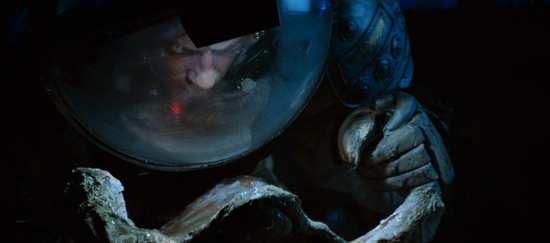


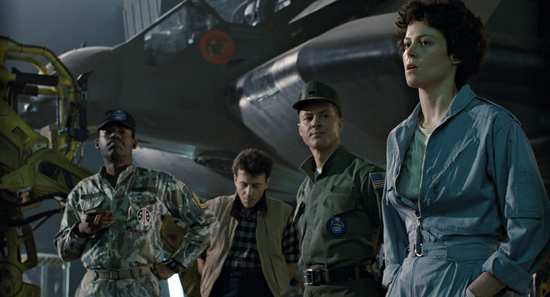


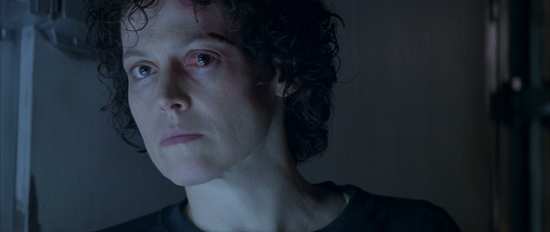
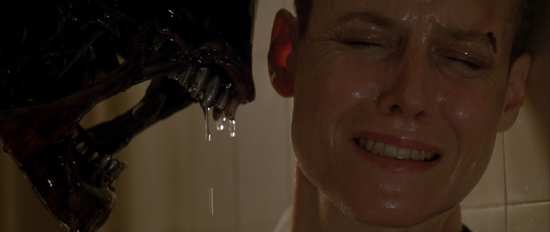
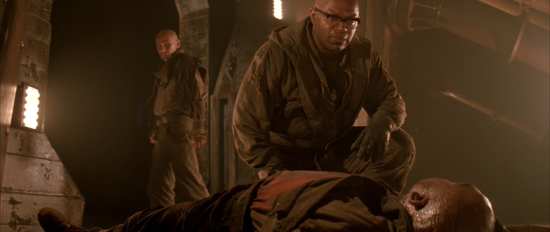
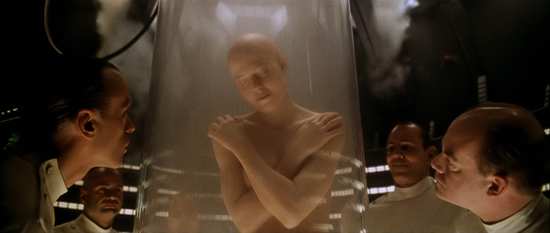
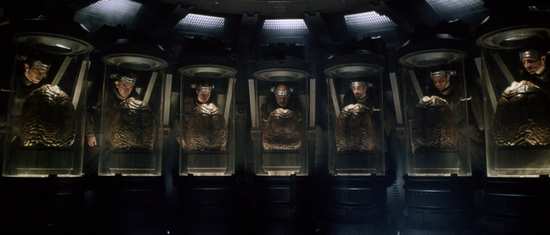

Your Opinions and Comments
Be the first to post a comment!